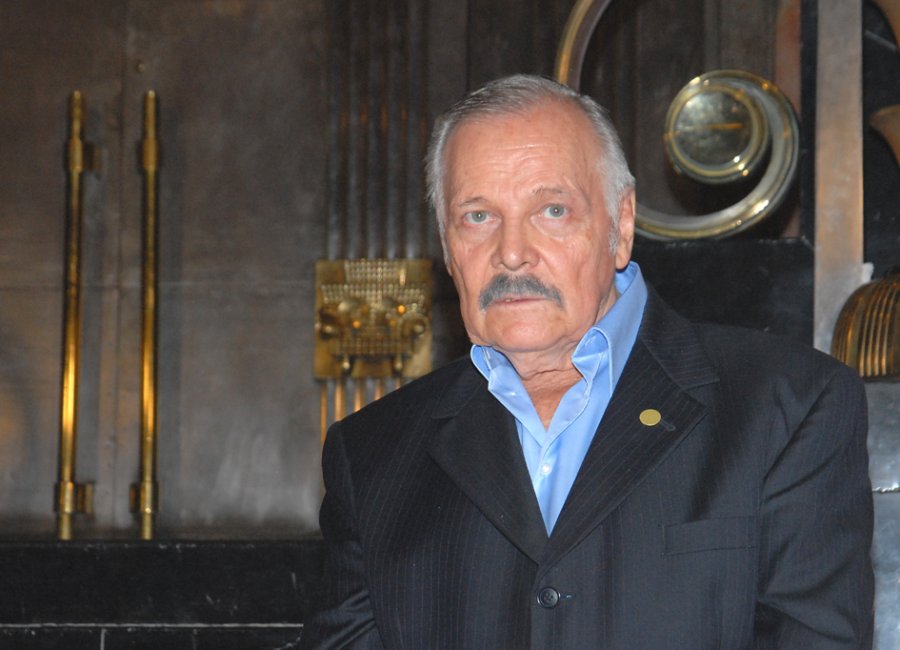Noticias
Emeritus creator of Fonca since 1993
Artist José Luis Cuevas died
July 03, 2017Painter, drawer, engraver, sculptor and illustrator José Luis Cuevas, fundamental creator of fine art in Mexico in the 20th century and a prominent member of the movement known as La Ruptura passed away on Monday, July 3rd in Mexico City.
President of the Republic, Enrique Peña Nieto, wrote in his Twitter account: "Artist from Mexico and the world, José Luis Cuevas will always be remembered as synonymous with freedom, creation and universality. Rest in peace".
Secretary of Culture of the Government of the Republic, Maria Cristina García Cepeda, said through the social network Twitter: "My deep regret for the death of José Luis Cuevas, one of our greatest fine art creators of the 20th century. My condolences to his relatives. "
In another tweet, the head of Culture wrote: "Today, I have been fortunate to say goodbye to José Luis Cuevas by visiting his exhibition at @cecut_mx. It was a hug in time. "
José Luis Cuevas was born on February 26th, 1934 in Mexico City. He spent most of his life at the pencil and paper factory El Lápiz del Águila, run by his paternal grandfather, Adalberto Cuevas. This early contact with paper and graphic design would mark his destiny decisively.
At the age of seven he won a children's drawing contest promoted by the Department of Public Education, to self-portray as a worker child.
José Luis Cuevas was essentially a self-taught artist. Before age 10, he enrolled as an irregular student at the National School of Painting, Sculpture and Engraving of La Esmeralda, where he took a course, since a rheumatic fever forced him to leave his studies and bed rest, time in which he devoted himself to reading and drawing profusely.
In 1948 he made engraving studies with Professor Lola Cueto at Mexico City College. From 1956 to 1957 he was a professor of drawing at the School of Arts of the Universidad Iberoamericana and at the Instituto Coronet Hall México.
In 1961 he lived in Europe for 10 months and from 1976 to 1978 he settled in France.
Beginning in the 1950s, he was invited to work in workshops around the world, including the Tamarind Workshop in Los Angeles, California; Poligrafía in Barcelona as well as in the Taller Kyron, Mexico.
An example of an international interest in his work was reflected in 1982, when 14 galleries from Mexico City and others in Barcelona, Paris, Lima, Coral Gables, New York, San Diego, La Jolla and Washington, DC, exhibited his work simultaneously.
Part of José Luis Cuevas’s work, as well as his interest as an art collector, can be seen at the José Luis Cuevas Museum, opened on July 8th, 1992, located at 13, calle Academia in the Historic Center of Mexico City.
José Luis Cuevas won important prizes such as the first International Drawing Prize at the V São Paulo Biennial (1959), the first International Engraving Prize at the First Triennial in New Delhi (1968).
In 1987, the president of the Republic Miguel de la Madrid appointed him as a life counselor of the Crónica of the City of Mexico. That same year, he was a resident artist at the Pasadena City College in California. In Monterrey, he was declared Distinguished Guest, and he was given in Tijuana the Keys of the City.
In 1988 he presented the Suite Madrileña in Misrachi Gallery and settled in New York. In that same year he illustrated for the magazine Play Boy, The Bitter Truth a story of the Polish novelist Isaac Bashevis Singer, Nobel Prize of Literature 1978.
In 1981 he received the National Prize of Sciences and Arts of Mexico; also the order of Knight of Arts and Letters of the French Republic (1991) and entered the National System of Creators as Emeritus creator (1993).
In 1994, in an unprecedented event in Latin America, the company Richer in Monterrey published the first two pieces of coins by José Luis Cuevas, made in gold and silver, originally designed for eight pieces of each metal that would come out each three months. The coins show La Giganta on the head and a self-portrait on the back.
In 1996, in his former house in Cuernavaca, Morelos, it was inaugurated the Workshop of Engraving of the José Luis Cuevas Museum; in 1997 he was named Artist of the City by the Government of Mexico City and in 2003 received the Gold Medal granted by the National Institute of Fine Arts.
With the exhibition José Luis Cuevas. Recent work. A Tribute to his 86 years, which was opened on Friday June 23rd, the Cultural Center Tijuana (Cecut, for its acronym in Spanish) paid tribute to the painter.
The display features 109 small-format drawings, 19 letters on paper, an acrylic letter on canvas, seven large acrylic paintings, seven bronze reliefs and eight medium-format bronze sculptures.
There are among his most representative works: La giganta (The giantess), Hombre mirando al infinito (Man looking at infinity), Figura obscena (Obscene figure) and Carmen.
José Luis Cuevas has exhibited in the most important galleries and museums in Mexico, United States, France, Argentina, Brazil, Italy, Costa Rica, El Salvador, Colombia, Canada, Spain, Poland, Germany, Puerto Rico, Venezuela, Belgium, Finland, Peru, Greece and Ecuador.
On Wednesday, June 1st, the exhibition José Luis Cuevas. Graphic works was opened at the Instituto Cultural de Mexico in France. The exhibit is made up of 51 works featuring lithographs and drawings of his private collection.
Mexico,Distrito Federal
